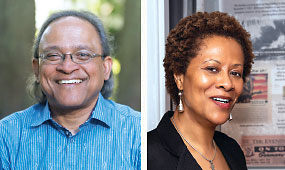SCOTUS Deals a Blow to American Diversity by Overturning Affirmative Action
For over 60 years, affirmative action has been a bulwark of American life, an attempt to mend the gap between America’s promise of equality and the reality of profound and widespread discrimination and disparities in health, wealth, and well-being due to racism, past and present. The Supreme Court’s recent majority opinion in Students for Fair Admissions v. Harvard and Students for Fair Admissions v. University of North Carolina upends precedent, misreads history, and reveals a court all too willing to advance the causes of the dominant culture and perpetuate abuses of power.
By advancing a view that the Constitution, its amendments, and civil rights acts are “colorblind,” the Supreme Court ignored the reality that our culture has been striving in law and society to properly see race and, in so doing, correct abhorrent conditions that began with slavery and genocide, continued through Jim Crow, Chinese exclusion through immigration law, and Japanese American incarceration, and are still operant in the many ways that biases affect us today.
Distressingly, the court’s majority pitted Asian Americans against Black and other people of color, arguing that Whites and Asians had been harmed by affirmative action. However, lower courts ruled “in lengthy trials” that Harvard did not discriminate.
Asian Americans, through the Model Minority Myth, have long been used as a wedge against Black, Latinx, and Indigenous communities. This myth suggests that “Asian family values,” hard work, and other supposed qualities of Asian Americans—including silence against oppression—prove that the American Dream is real. The Model Minority Myth buttresses the myth of meritocracy, which ignores the fact that Whites and the wealthy benefit from centuries of history that places them at the top of America’s caste system.
Students for Fair Admissions purported to show that some Asian Americans, by dint of test scores and GPAs, were more “deserving” of admissions to selective institutions than other historically excluded groups. First, there is substantial evidence that standardized tests are culturally biased and are not a strong predictor of performance in college and beyond, and they hardly embody holistic evaluations of candidates. Second, the district court ruled against Students for Fair Admissions. It is only with a biased interpretation of its arguments, and what Justice Sonia Sotomayor called a misunderstanding of basic principles of statistics, that the majority found in its favor.
Justice Sotomayor, in her dissent, also wrote that the majority’s opinion relies on “revisionist history.” Chief Justice John Roberts argued that the Equal Protection Clause of the 14th Amendment and the Civil Rights Act of 1866 are “colorblind.” She wrote, “The same Reconstruction Congress that passed the Fourteenth Amendment eschewed the concept of colorblindness as sufficient to remedy inequality in education.” The amendment and laws were passed over the objections and vetoes of President Andrew Johnson, who in fact argued for “colorblindness.” As scholars Uma Mazyck Jayakumar and Ibram X. Kendi Jayakumar argued in The Atlantic, “race-neutral is the new separate-but-equal.”
Justice Roberts’ opinion clearly promotes the myth of individualism, ignoring the reality that we are all formed by group and cultural experiences. Thus, policies like affirmative action are needed to level the playing field. And while Justice Roberts praises diversity, he also found that its benefits are “imponderable” and beyond the ability of courts to measure. This overturns the controlling opinion of Justice Lewis Powell in the 1979 Bakke case and effectively questions diversity itself. It also flies in the face of much evidence from education, business, and health care confirming the fruits of diversity, evidence that Justice Jackson cited in her dissent.
The Supreme Court’s ruling affects the mental health of vulnerable populations in multiple ways. The pipeline for training psychiatrists and other professionals from minoritized groups will likely be narrowed, impacting access to culturally sensitive care. Formative cross-cultural experiences in college, medical school, residency, and beyond will be impacted, furthering what other authors have called “crypto-apartheid,” or differential treatment of racialized groups.
The ruling is clear evidence of bias and disavowal of systemic racism in our legal system and society-writ-large, something that our political milieu is further magnifying as the 2024 presidential election heats up. In sum, these can be considered only as macro-aggressions on minoritized populations and physicians, ones that will take many years of effort to overcome. ■
Resources
The Atlantic article “‘Race Neutral’ Is the New ‘Separate but Equal’”




